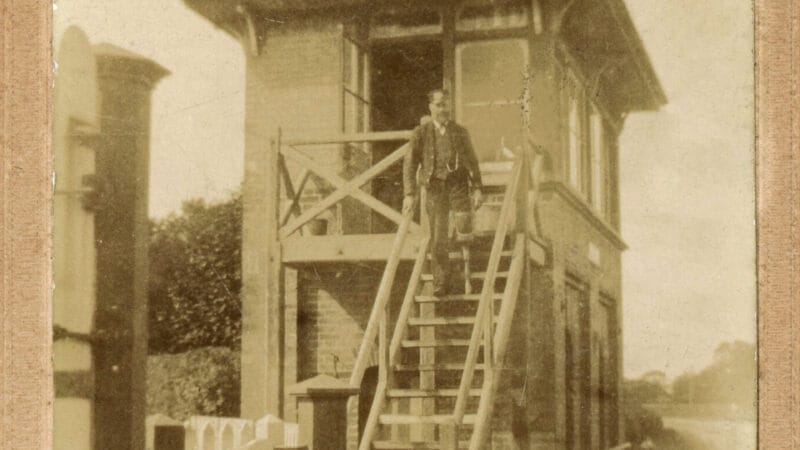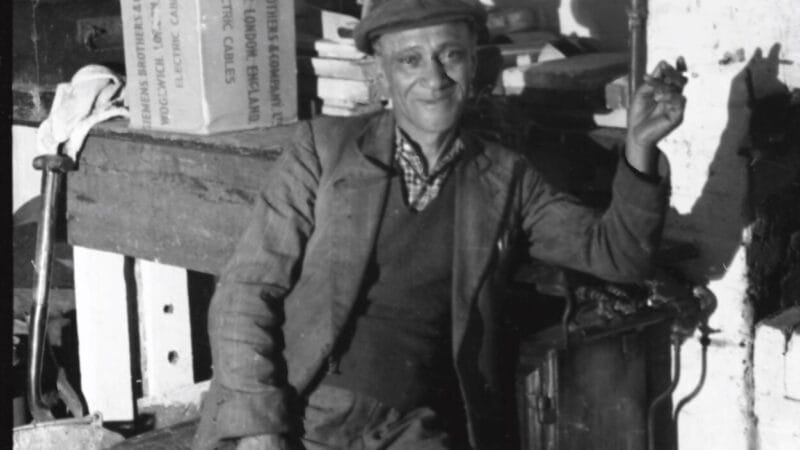The British Transport Police provides a specialist dedicated service protecting passengers and staff. Bill Rogerson finds out how it all started.
The origins of modern police forces came with the establishment of the Bow Street Runners (the original ‘thief takers’) and the Thames Marine Police in 1797, to combat piracy which was rife on the Thames.
When the Stockton and Darlington Railway made its inaugural run on September 27 1825, there was mention of a railway police officer, Joseph Sedgwick, who was the earliest known railway police officer, serving at Stockton in 1825.
Just a few months later, on June 30 1826, came the first recorded mention of the establishment of a police Superintendent, four Officers and as many Constables or ‘gatekeepers’ as circumstances required. The railway police were therefore on duty three years before the formation of the Metropolitan Police on September 29 1829.
One of the Constables was PC W. John Metcalfe, who joined in the 1840s. A painting of him in his red tunic can be seen at the National Railway Museum in York.
Over the next 50 years the railway network expanded at an extraordinary rate, using a huge workforce of men previously used to dig canals, or navigations (hence the word ‘navvy’). People used to think of these navvies as being Irish, but the majority came from the English agricultural classes. Others came from Germany and France to gain work.
In the days before county constabularies, gangs of navvies brought fear to genteel Victorian Britain, provoking Parliament to pass an Act on August 10 1838 requiring all railway companies to provide constables to patrol and protect the railway.
The navvies kept the early railway police officer very busy. In 1839, a fight broke out during construction of the Chester and Birkenhead Railway. It took four days and the threat of military intervention to restore order.
Early railway police also played a role in running the railways, with a police officer based along every mile of the line to regulate the trains and operate each set of points.
A new first for the railways came in 1845, when John Tawell became the first person to be arrested with the help of information technology.
Tawell had murdered a former servant at Slough and escaped aboard a London-bound train. A message was sent to Paddington on the newly installed telegraph, and Sergeant William Williams of the Great Western Railway Police met him off the train and arrested him.
In the early 1900s many railway forces reorganised. The North-Eastern Railway Police became the first police force in the UK to use police dogs in 1909.
With the outbreak of the First World War, railway police officers responded to the call to arms. The Midland Railway police lost 56% of its staff to the military. To replace them, paid Special Constables and women were taken on, making railway police one of the first forces to recruit women.
After the war, returning officers found their wages cut and conditions worsened, leading to the creation of the Police Federation and Britain’s only police strike in 1919.
In 1921, the Railways Act amalgamated hundreds of railway, dock, and harbour police into four large organisations: Great Western; London and North Eastern; London, Midland and Scottish; and Southern. Each was led by a Chief of Police.
The Second World War led to the temporary amalgamation of the railway police into one force, making it the second largest force in the UK.
Hitler’s Luftwaffe targeted the railways. In 1940, around 600 people were taking shelter in Balham underground station when it was struck by a bomb. Water, gas, and sewerage mains were ruptured and 68 people drowned as the station flooded. It took the railway police three months to remove and identify the dead.
Following the success of the temporary amalgamation of railway police, the British Transport Commission Police was established in 1949 – formed from the four old railway forces, the canal police, and several dock forces.
In 1979, British Transport Police became one of the first forces in Europe to computerise crime recording. The force also pioneered contingency planning and the use of live and tabletop exercises to combat terrorism.
More recently, the establishment of a Special Constabulary in 1996 and the recruitment of Community Support Officers has enhanced the way the force protects and reassures the six million people travelling and working on Britain’s railways every day.
The BTP is the National Police force for the railways of Great Britain. It has the same rank structure, uniforms, equipment, and powers of arrest as the Home Department forces. Officers are equipped with specialist skills and knowledge of the railways and receive specialised training to prepare them for the unique challenges the rail environment can present.
For nearly 200 years, BTP has handled all types of crime and continually developed its expertise in areas such as counter terrorism, major incident handling, and dealing with fatalities whilst minimising disruption to the rail system.
The force has also evolved to provide seamless policing across several European countries, with the introduction of Eurostar services and the expansion of major European football tournaments and Worlds Cups.
Its mission is to work in partnership with others to build a safe railway environment, free from disruption and the fear of crime.
Railways are complex, interdependent networks. The benefit of having a national force dedicated specifically to the rail network is to ensure timely and appropriate response with minimum disruption and maximum quality of service.
Two billion passengers travel through the network every year – ensuring their safety and security is the BTP’s business.
Bill Rogerson is Secretary of the British Transport Police History Group.


